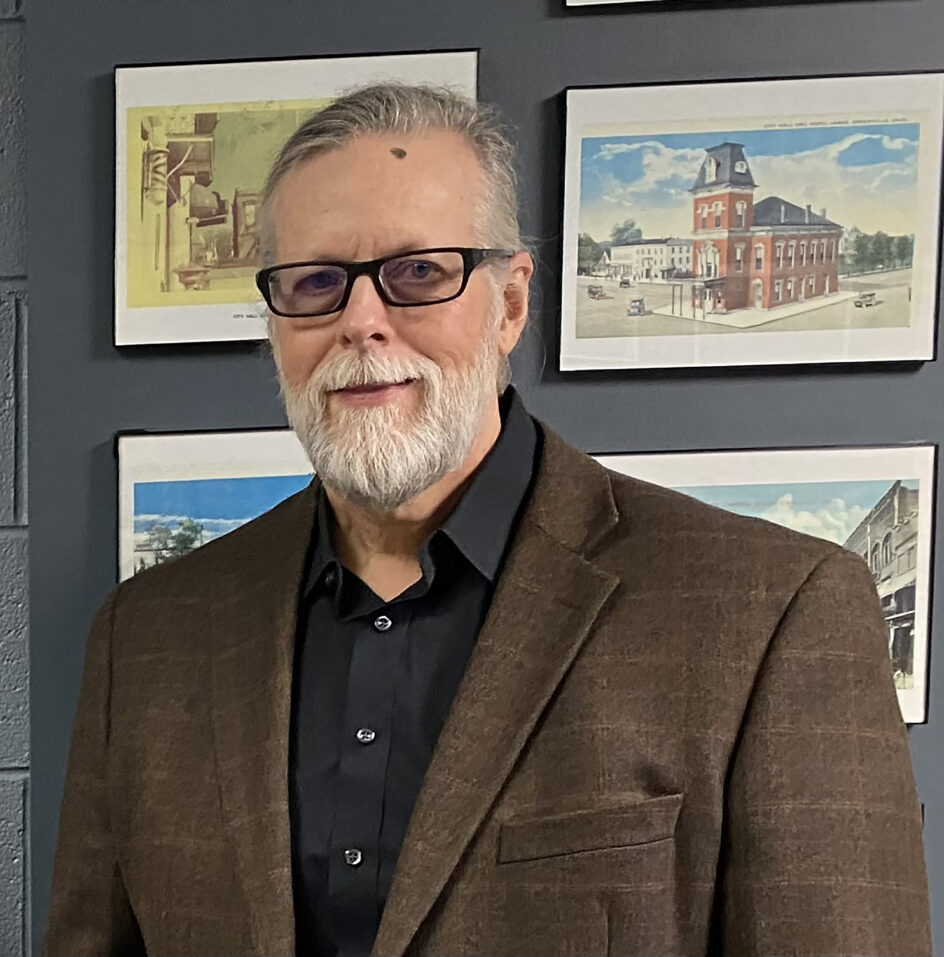American sharpshooter Annie Oakley was born in Darke County, Ohio—a rural spot nestled against the Indiana border along the state’s western edge. Preserving her legacy is, among other things, Clay Johnson’s job. He is the first professionally trained CEO of the Garst Museum, home of the National Annie Oakley Center. The task before him was daunting, including creating and managing significant institutional policies on everything from collections to security to disaster plans. But a dozen years later, Johnson—with the support of dedicated volunteers—has reimagined what’s possible. From the Gathering at Garst event to a grant-based school tour program, Johnson is making history compelling and accessible. In other words, he is using all three of his history degrees—a bachelor’s, a master’s and a doctorate—to help preserve and share the stories of the community he loves. Here, the 60-year-old husband and motorcycle enthusiast talks politics, Scouting and more.
What lights you up?
I love it when a volunteer or a volunteer committee celebrates their sense of accomplishment. Our organization relies on so many dedicated volunteers. Without their hard work, it would be challenging for us to thrive as we do.
What frustrates you?
Closed-mindedness creates barriers. The increasing political polarization is adding an additional layer of challenges to our limited resources.
What makes you laugh?
Am I still allowed to laugh at the style of humor I enjoyed as a teenager? Because I still do!
What professional mission are you on?
A passion of mine is to provide awareness through knowledge. Since a museum’s primary mission is to educate, I believe we can provide the necessary tools to inform about our past through interpretation. These efforts will hopefully lead to a better understanding and respect for our cultural heritage while building unity in our community.
What personal mission are you on?
A personal goal of mine is to absorb all that our rural material culture has to offer.
“It is critical for people to understand the time-tested adage that history can repeat itself.”
Clay Johnson
Why is human connection so important?
It takes humanity to facilitate change.
What is a memorable moment from your childhood—and why was it defining?
Becoming an Eagle Scout has had a positive and lasting impact on my life. Growing up in Beavercreek, Ohio, I was fortunate to have an active and attentive Boy Scout troop. The values I learned and the acquired outdoor skills are still treasured today. My Eagle Scout project was to restore two local cemeteries, and I am happy to say that after 44 years, parts of my project still survive.
Who made a powerful mark on your life, and how?
I was raised by a single mother struggling to put herself through college while raising two active teenage boys. She succeeded in excelling in her new career despite challenges. Witnessing her sacrifices for her family gave me a deep respect for so many other families striving to succeed. Unfortunately, she succumbed to a terminal illness at an early age, but seeing her happiness and success gave me the drive to return to school to pursue my passions.
What accomplishment are you most passionate about, and why?
During the first month of my employment at Garst Museum, I met with a creative and dedicated community volunteer who had the drive to help create a wonderful community event. The result was the Gathering at Garst. The Gathering’s mission is to promote awareness and appreciation of those who made unique contributions to the culture of Darke County and to celebrate the local heritage in a family-oriented and educational atmosphere. The highly-anticipated festival is held in July and features a Living History Encampment and a venue for performers and artists. Through the Living History Encampment, visitors learn of the cultural contributions that indigenous and pioneer settlers made in developing the area now known as Darke County. The encampment village, representing life from 1750-1865, is designed to engage the entire family while promoting a rich sense of community.
Who do you love to learn from?
I enjoy learning from those who are unafraid to get their hands dirty.
Why do you love Ohio?
I love the Ohio rural landscape. Since my teenage years, I have enjoyed riding my motorcycle and getting lost on our winding backroads. These trips are always enlightening and a great way to observe Ohio’s natural beauty, regional cultures and changing landscapes. Unfortunately, however, over the last few years of my travels, I have noticed a concerning increase in Confederate flags and other divisive and hurtful signs. In fact, a couple of years ago, I even had Ku Klux Klan propaganda thrown in my yard. Hopefully, in the coming years, our picturesque rural landscape will no longer be blighted by these pockets of hate.
What one story or person do you wish every Ohioan knew?
The story of Chief Little Turtle of the Miami tribe is often overlooked as part of our regional history. Little Turtle’s leadership resulted in the destruction of two American armies in the Ohio territory, but he later became a staunch ally. After signing the Treaty of Greene Ville on August 3, 1795, he pledged that although he was the last to sign the treaty, he would also be the last to break it. He held to his word and dissuaded many Indians from joining the British side during the War of 1812 despite his declining health.
What are you certain is true?
Despite their challenges or obstacles, people can change.
If there is a single mission you could mobilize people around, what would it be?
It is critical for people to understand the time-tested adage that history can repeat itself. Otherwise, we may relive some of our past ugly experiences or hardships.
If people defined you with one word, what do you hope it is?
Steadfast.

